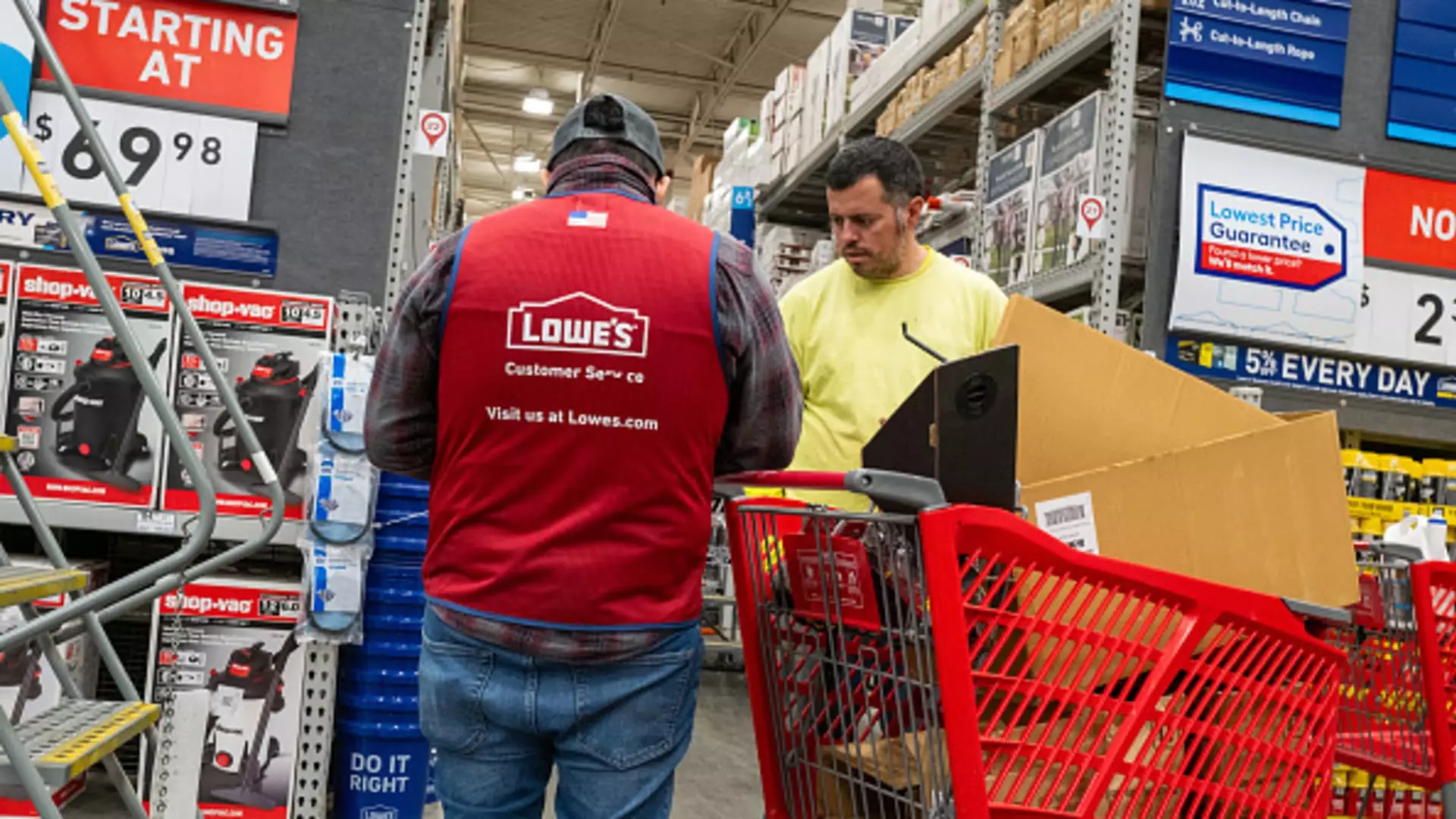Lowe’s recently announced a revision in its full-year forecast, citing a decline in quarterly sales and a bleak outlook on home improvement spending for the rest of the year. The company now anticipates total sales between $82.7 billion and $83.2 billion, down from the initial forecast of $84 billion to $85 billion. Additionally, it expects a 3.5% to 4% drop in comparable sales, in contrast to the previously estimated 2% to 3% decline.
CEO Marvin Ellison attributed the sluggish sales to consumers awaiting a potential interest rate cut by the Federal Reserve. With inflation on the rise and uncertainties in the economic landscape, customers are hesitant to undertake significant purchases until interest rates become more favorable. Ellison pointed out that around 90% of Lowe’s customers are homeowners with fixed mortgage rates below 4%, explaining their reluctance to incur additional expenses at higher interest rates.
In the second quarter of the fiscal year, Lowe’s reported an adjusted earnings per share of $4.10, surpassing the $3.97 Wall Street consensus. However, its revenue fell short of expectations at $23.59 billion, compared to the anticipated $23.91 billion. The company’s net income dropped to $2.38 billion, or $4.17 per share, down from $2.67 billion, or $4.56 per share, in the same period last year. The sale of its Canadian retail business in 2022 provided a $43 million pretax gain, boosting the earnings per share by 7 cents.
Lowe’s recorded a decline in net sales, marking the sixth consecutive quarter of year-over-year sales decrease. Comparable sales dropped by 5.1%, impacted by reduced discretionary home projects and unfavorable weather conditions affecting outdoor and seasonal product sales. However, online sales and transactions with home professionals helped offset some of these losses. The company’s financial outlook comes at a time when economic indicators and corporate earnings present a mixed picture of consumer spending trends.
Despite the challenging market conditions, Lowe’s competitor, Home Depot, exceeded Wall Street’s expectations in its recent earnings report. Both companies foresee a weaker second half of the year due to consumer reluctance to engage in large-scale home improvement projects. However, Ellison remains optimistic about the long-term prospects of the industry, citing factors such as an aging housing stock, millennials forming households, and Baby Boomers opting to renovate their current homes. He believes that once market conditions improve, Lowe’s is well-positioned to capture a larger market share.
Lowe’s recent financial performance reflects a cautious approach by consumers in the home improvement sector amidst economic uncertainties and interest rate concerns. While the company faces challenges in the short term, the long-term outlook appears promising, driven by demographic shifts and evolving consumer preferences. By adapting to changing market dynamics and focusing on innovation, Lowe’s aims to navigate through the current challenges and emerge as a stronger player in the competitive landscape.

Leave a Reply